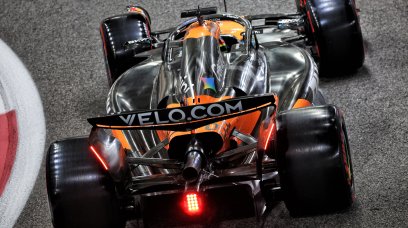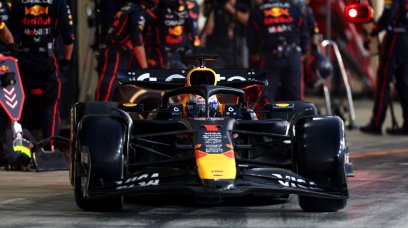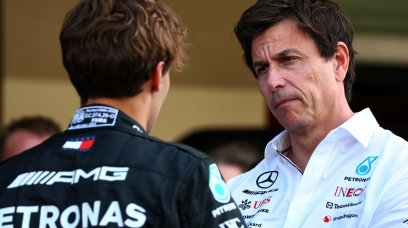While waiting for the FIA to produce the Red Bull and Aston Martin certificate of conformity on Monday 10 October, we considered it appropriate to do a backward look at how many major developments have been adopted on the cars of the three top teams - Mercedes, Red Bull and Ferrari. Indeed, it seems fair to argue that the results were very interesting. Let's start with Mercedes and the developments made to its troublesome W13 machine.
Mercedes 2022 developments
The first upgrade of all, in fact, concerns the introduction of the current 'zero sidepod' configuration, which was added to the car in the second pre-season test in Bahrain, replacing the 'standard' W13 presented and run in the first test in Barcelona. It was obviously a very large effort, both in terms of design and production of the various aerodynamic components. In fact, the whole aerodynamic look was different, not only at the top level of the bodywork, but also, indeed, above all at the bottom. In subsequent races up to Miami, the car was then developed in terms of the configuration of the wings to adapt them to the characteristics of the circuits, like the rival cars. In Spain, however, we witnessed the first major evolution of the floor of the car, then followed by that introduced at Silverstone, where the W13, in fact, acquired the current floor version of the car. In reality it is correct to point out that there have been intermediate versions, not so much on a visual level, but on a structural level, to increase the rigidity of the floor - and solve the porpoising issues which badly affected the W13. This actually happened both in the phase between Spain and Silverstone, and in the one that preceded the Belgian GP. Basically, we could say that Mercedes has in fact operated at least seven major developments.
Ferrari and Red Bull upgrades in spotlight
As for Ferrari, the profound changes were basically concentrated in four specific races. A revised floor made its debut at Imola compared to the version used in Charles Leclerc's victory in Australia. In reality it would be correct to also include the Bahrain floor which in fact differed for the first time from that used in the Barcelona tests. A substantial bodywork evolution took place at Silverstone, with the sides flattened more at the rear and lower towards the rear. A new floor was seen then, even if it did not constitute a major modification in Spain, before the radical evolution introduced in France. The evolution of this element was a substantial revision of the rear profile of the Venturi channels, and of the front barge boards. In terms of aerodynamic developments involving the wings, Ferrari has introduced four different specifications of the front wing and six of the rear wing. As for Red Bull, as with rival cars, many developments have concerned the floor. Not only on a visual level, but above all on a structural level in favor of an overall lightening of the car. At Imola a floor essentially modified in structure appeared, while changes to the side profile were seen in several races starting from the Spanish GP. A floor similar to that of the F1-75 was introduced at Silverstone, with yet another new version in Singapore. In terms of bodywork and sidepods, the change introduced at Silverstone is relevant, with a totally different design of the engine cover and rear bodywork. Red Bull has only adopted three wing configurations, with small additional changes to the front endplates. In essence, Red Bull seems to have developed less frequently than its direct rivals. There seems to have only been five major developments introduced to Max Verstappen and Sergio Perez's RB18 so far.
Most read








